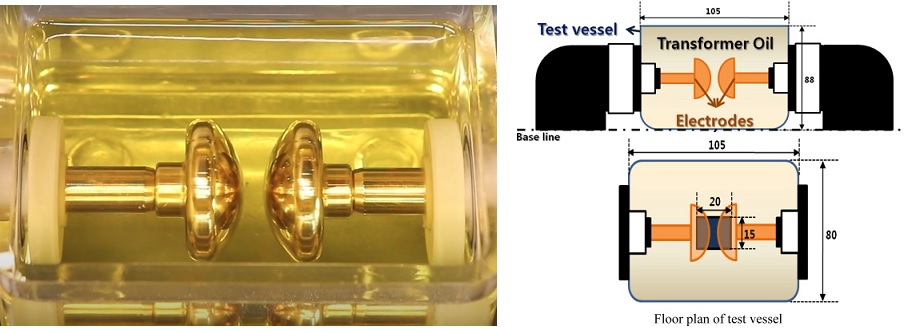Protecting Oil Solutions for High-Performance Electrical Tools
Protecting Oil Solutions for High-Performance Electrical Tools
Blog Article
Why Dielectric Transformer Oil Matters: Key Attributes and Maintenance Tips
The significance of dielectric transformer oil expands beyond mere capability, playing a critical duty in both the insulation and air conditioning of electric transformers. Its distinct homes, such as high dielectric toughness and chemical stability, add to functional efficiency and safety and security. The upkeep of these oils is equally crucial to protect against concerns that may jeopardize transformer efficiency. Comprehending the vital qualities and ideal practices for upkeep is necessary for guaranteeing long life and reliability. As we check out these facets further, the ramifications for transformer wellness and operational efficiency ended up being increasingly obvious.
Relevance of Dielectric Transformer Oil
Dielectric transformer oil plays an essential function in the efficient operation of electrical transformers, as it is constantly used as both a coolant and an insulator. Its shielding homes stop electric discharges and arcing, which are important to keeping the honesty of transformer components. By efficiently isolating conductive parts, dielectric oil enhances the safety and reliability of the transformer, thus extending its operational life-span.
In addition to its insulating capacities, dielectric transformer oil functions as a coolant, dissipating and soaking up warmth produced during the electrical transformation procedure. This thermal management is necessary to protect against overheating, which can result in equipment failing and expensive downtime. The oil flows within the transformer, efficiently moving heat away from crucial locations, hence making sure optimal performance.
Additionally, the chemical security of dielectric oil is essential for reducing the oxidation and degradation that can occur with time (waste transformer oil). Regular monitoring of its residential properties, such as wetness content and acidity, is essential for keeping its efficiency. Overall, the significance of dielectric transformer oil can not be overemphasized, as it is fundamental to the risk-free, effective, and long-term operation of electric transformers
Trick Attributes of Dielectric Oil
The efficiency of dielectric transformer oil is mainly established by its crucial qualities, that include high dielectric toughness, thermal conductivity, and chemical security. High dielectric strength is crucial as it enables the oil to stand up to substantial voltage levels without breaking down, thereby stopping electric arcing and ensuring risk-free procedure of the transformer. This particular is important for maintaining the dependability of electrical systems.
Thermal conductivity is another crucial attribute of dielectric oil. It promotes reliable heat dissipation from transformer parts, minimizing the risk of overheating and lengthening the life expectancy of the equipment (waste transformer oil). Effective thermal management is crucial in preserving optimal operating temperature levels, which directly affects efficiency
Chemical stability is just as essential, as it ensures that the oil does not break down or react adversely with products within the transformer in time. This security helps keep the oil's insulating homes and stops the development of unsafe sludge or deposits that can impair performance.
Furthermore, reduced viscosity at operating temperature levels enables far better blood circulation within the transformer, cooling down both boosting and insulation. With each other, these crucial attributes make certain that dielectric transformer oil does properly, supporting the overall effectiveness and dependability of electric systems.
Advantages of Making Use Of Dielectric Oil

In addition, dielectric oil functions as an effective coolant, dissipating warm generated throughout transformer procedure. This temperature level law is important for avoiding overheating, which can cause devices failing or minimized life-span. The oil's thermal properties add to optimum functional problems, making it possible for transformers to operate at their ideal.
An additional substantial benefit is the oil's chemical stability and resistance to oxidation. click here for more info These residential properties minimize the formation of sludge and various other degradation byproducts, thereby minimizing upkeep demands and expanding the periods between oil changes. Dielectric oil offers excellent dampness absorption capacities, which secure the transformer from the destructive results of water access.
Maintenance Best Practices

Furthermore, preserving the transformer's temperature level within specified limitations is important. Elevated temperatures can accelerate oil degradation, adversely affecting its dielectric residential properties. Implementing a temperature level surveillance system can aid in preserving ideal conditions.
Furthermore, ensuring correct air flow and air conditioning visit the website of the transformer system lessens the threat of overheating. It is additionally crucial to keep the transformer totally free from debris and impurities that might jeopardize its performance.
Conducting routine visual examinations for leakages, corrosion, or indicators of wear on gaskets and seals is one more best method. Any problems ought to be attended to quickly to prevent oil contamination and preserve system integrity.
Finally, establishing a maintenance timetable that includes oil substitute or treatment can improve the life-span of dielectric oil, ensuring it proceeds to perform properly. By adopting these upkeep ideal methods, drivers can optimize transformer performance and decrease unplanned downtime.
Typical Concerns and Solutions
Transformers utilizing dielectric oil can come across several usual issues that might influence their performance and dependability. One noticeable issue is the degradation of the oil because of thermal stress and anxiety, which can result in reduced dielectric toughness and increased risk of arcing. Normal tracking of the oil's temperature level and applying cooling solutions can reduce this issue.
One more problem is moisture access, which can compromise the insulating residential properties of the oil. This can be resolved through regular screening for water material and using desiccants or vacuum cleaner dehydration procedures to get rid of dampness.
In addition, the development of sludge as a result of oxidation can block normal procedure. This can be dealt with by periodic oil filtration and substitute when necessary, ensuring optimal fluid cleanliness.

Conclusion
To conclude, dielectric transformer oil plays a vital function in making certain the efficient operation and safety and security of electric transformers. Its essential attributes, consisting of high dielectric strength and chemical stability, add to optimum performance while reducing upkeep needs. Adhering to best maintenance methods, such as normal monitoring of wetness and level of acidity, is crucial for preventing typical problems and improving the functional life-span of transformers. The significance of dielectric transformer oil can not be overstated in the realm of electrical facilities dependability.
The relevance of dielectric transformer oil expands past simple functionality, playing a critical function in both the insulation and air conditioning of electric transformers.Dielectric transformer oil plays a crucial role in the efficient procedure of electric transformers, as it is consistently utilized as both a coolant and an insulator. Generally, the value of dielectric transformer oil can not be overstated, as it is essential to the safe, efficient, and lasting procedure of electrical transformers.
The effectiveness of dielectric transformer oil is largely determined by its vital features, which include high dielectric strength, thermal conductivity, and chemical stability.In final thought, dielectric transformer oil plays an important role in ensuring the reliable operation and safety of electric transformers.
Report this page